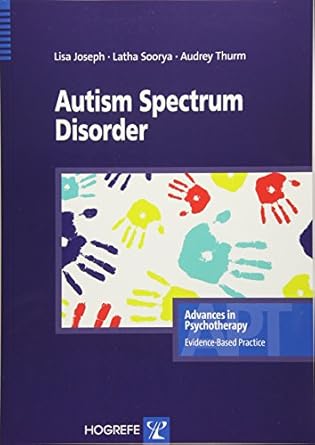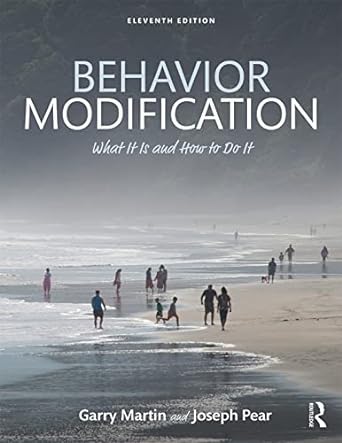Contents
Introduction
Ivar Lovaas was a Norwegian-American clinical psychologist and professor known for his groundbreaking work in the field of behavioral therapy and the development of Applied Behavior Analysis (ABA), particularly in the treatment of autism spectrum disorders. His pioneering techniques have been influential in shaping modern approaches to behavioral modification and early intervention for children with developmental disabilities.

Lovaas’s work has sparked both acclaim and controversy, particularly regarding the ethical aspects of his early research, but his contributions to psychology, especially in the field of autism treatment, remain significant. This article explores Lovaas’s life, major theories, and the lasting impact of his work on psychology and autism therapy.
Early Life and Education
Ivar Lovaas was born on May 8, 1927, in Lier, Norway, a small town near the capital city of Oslo. Growing up in the aftermath of World War II, Lovaas experienced the societal challenges of post-war Europe, which fostered his interest in psychology and the study of human behavior. His early fascination with understanding why people behave the way they do was also fueled by the cultural changes and psychological trauma that marked the era.
Image Source: satonline.org

Educational Journey
| Aspect | Details |
|---|---|
| Undergraduate Education | Lovaas completed his undergraduate degree in philosophy and psychology at the University of Oslo, where he developed an early interest in understanding human behavior. His exposure to European psychological theories laid the foundation for his future work in behaviorism. |
| Graduate Studies | He earned his Ph.D. in Clinical Psychology from the University of Washington in 1958. Lovaas’s research during this time focused on the principles of learning and behavior modification, inspired by B.F. Skinner’s operant conditioning theories. |
| Postdoctoral Work | Lovaas continued his postdoctoral research at UCLA, where he worked on early behavioral interventions for children with developmental disabilities, including autism. His studies laid the groundwork for the development of Applied Behavior Analysis (ABA). |
| Academic Positions | Lovaas became a professor at UCLA, where he would remain for much of his career, pioneering behavioral therapy techniques and working with children with autism, establishing UCLA as a leading institution in the study and treatment of developmental disorders. |
Influences and Early Career
| Aspect | Details |
|---|---|
| B.F. Skinner | Lovaas was profoundly influenced by the work of B.F. Skinner, particularly his theories of operant conditioning. Lovaas applied Skinner’s concepts of reinforcement and punishment to his own work in behavior modification. |
| Learning Theory | His focus on the relationship between learning and behavior grew out of traditional behaviorist approaches, which sought to understand behavior as a function of environmental stimuli and responses. |
| John Watson | Lovaas was inspired by John Watson’s early contributions to behaviorism, particularly the idea that all human actions are learned and can be modified through environmental control. |
| UCLA’s Neuropsychiatric Institute | At UCLA, Lovaas worked at the Neuropsychiatric Institute, where he refined his behaviorist techniques and conducted seminal research on autism intervention and early childhood development. |
| Autism Research | Lovaas’s clinical work with children with autism led to his exploration of how behavioral therapy could be used to modify social and cognitive behaviors, resulting in his development of Applied Behavior Analysis (ABA). |
Major Theories and Work

Applied Behavior Analysis (ABA)
Ivar Lovaas is best known for his development of Applied Behavior Analysis (ABA), a technique that applies principles of behavioral modification to improve social, communication, and learning skills in individuals with autism.
- Principles of ABA: ABA is grounded in operant conditioning, using positive reinforcement to encourage desirable behaviors and negative reinforcement or punishment to reduce undesirable behaviors.
- Early Intervention: Lovaas emphasized the importance of early intervention, noting that intensive ABA therapy, when begun in early childhood, could lead to significant improvements in cognitive and social functioning for children with autism.
- The Lovaas Model: The Lovaas Model of ABA therapy is an intensive intervention, typically involving 40 hours per week of therapy for several years. Lovaas’s studies demonstrated that children who received early and intensive ABA therapy.
Image Source: lumierechild.com
Lovaas’s work was pivotal in changing how autism was treated and understood. Before his research, autism was often considered untreatable, with many children being institutionalized.
- Outcome Studies: Lovaas’s 1987 study, often considered the foundation of modern ABA therapy, showed that nearly half of the children with autism who received intensive ABA therapy were able to attend regular education classes without additional support.
- Criticism and Ethical Concerns: Lovaas’s early work, particularly his use of aversive techniques such as electric shock to reduce undesirable behaviors, has been criticized for ethical reasons. However, modern ABA has largely eliminated these aversive methods, focusing instead on positive reinforcement.
Image Source: helpguide.org

Autism Therapy
Famous Books and Publications

Teaching Individuals with Developmental Delays

Applied Behavior Analysis (2nd Edition)

Autism Spectrum Disorder (Advances in Psychotherapy)

Behavior Modification: What It Is and How to Do It
Influence on Contemporary and Future Psychological Research
- Autism Research: Lovaas’s work on ABA therapy has had a profound and lasting influence on autism research. His emphasis on early intervention and structured behavioral therapy continues to guide contemporary studies on autism treatment and developmental disorders. Researchers continue to explore new techniques that build upon the Lovaas Model to enhance therapeutic outcomes.
- Behavioral Therapy: Lovaas’s development of ABA has influenced the evolution of behavioral therapy, with new research focused on expanding behaviorist approaches to other conditions beyond autism, such as ADHD and intellectual disabilities. ABA’s principles are now applied in diverse settings, including schools and hospitals, to improve learning and behavior management.
- Neuroscience and Developmental Disorders: While ABA is grounded in behavioral principles, Lovaas’s work has inspired ongoing research into the neurobiological underpinnings of autism and other developmental disorders. Current research in neuroscience seeks to understand how ABA therapy can affect brain development in children with autism.
- Cognitive and Social Skills Training: The success of ABA in teaching cognitive and social skills has led to an increasing interest in developing new therapeutic models that integrate behavioral therapy with cognitive therapies. Researchers are now investigating how combining these approaches can provide comprehensive care for individuals with autism.
- Educational Approaches for Autism: Lovaas’s work has heavily influenced how schools and educational institutions approach autism. Special education programs often incorporate ABA techniques, and researchers continue to study how ABA-based educational interventions can improve learning outcomes for children with autism in both special and mainstream educational settings.
Psychologists and Educators Influenced by Ivar Lovaas

- Robert Koegel: A prominent psychologist in the field of autism treatment, Koegel expanded on Lovaas’s work by developing Pivotal Response Treatment (PRT), an intervention based on ABA principles that focuses on improving pivotal areas of a child’s development, such as motivation and self-management.
- O. Ivar Lovaas (his son): Ivar Lovaas’s son, also a psychologist, continued his father’s legacy by conducting research on ABA and autism intervention, helping to expand the understanding of behavior-based treatments for developmental disorders.
- Gina Green: A leading behavior analyst, Green has built on Lovaas’s work to develop evidence-based behavioral interventions for children with autism. She has focused on improving ABA’s ethical practices and ensuring that interventions prioritize the well-being of the child.
- Tristram Smith: A student of Lovaas, Smith contributed to refining the application of ABA therapy for children with autism, conducting numerous studies that have reinforced the efficacy of behavior-based interventions in improving outcomes for children with autism.
- Catherine Maurice: An advocate for ABA therapy, Maurice wrote extensively about Lovaas’s work and its life-changing impact on families with autistic children. Her books helped to popularize ABA therapy and brought attention to its potential to improve the lives of children with autism.
Impact on Psychology
- Influence on Modern Thought: Ivar Lovaas’s work on Applied Behavior Analysis (ABA) transformed how autism and developmental disorders are treated, marking a fundamental shift in the understanding of behavior modification. His research emphasized that even complex developmental conditions such as autism could be managed and improved through structured behavioral therapy. Lovaas’s contributions have shaped modern psychological thought by providing a framework for early intervention and the importance of individualized therapeutic approaches, influencing both clinical practice and educational interventions.
- Legacy and Recognition: Lovaas’s contributions earned him widespread recognition, including prestigious awards such as the Society for the Advancement of Behavior Analysis Award for his pioneering work in behavior therapy. He received honorary recognition from autism advocacy organizations for his efforts to improve the lives of children with autism and their families. Although some of his early methods sparked controversy, Lovaas’s legacy remains influential in the fields of clinical psychology and behavioral therapy. His work continues to shape the modern understanding of autism treatment, and his development of ABA remains a cornerstone of early intervention programs worldwide.
Conclusion
Ivar Lovaas’s development of Applied Behavior Analysis (ABA) revolutionized the treatment of autism and developmental disorders, offering hope and improved outcomes for countless individuals and their families. His pioneering work in behavior modification continues to influence both clinical psychology and educational approaches for children with autism, ensuring that his legacy endures as a key figure in the history of psychology.
Bibliography
- Lovaas, O. I. (1987). Behavioral Treatment and Normal Educational and Intellectual Functioning in Young Autistic Children. Journal of Consulting and Clinical Psychology.
- Lovaas, O. I. (2002). Teaching Individuals with Developmental Delays: Basic Intervention Techniques. Pro-Ed.
- Lovaas, O. I. (1973). The Autistic Child: Language Development through Behavior Modification. Irvington.
- Lovaas, O. I., & Smith, T. (1981). Teaching Developmentally Disabled Children: The ME Book. University Park Press.
- Lovaas, O. I., & Koegel, R. (1979). Autistic Children: A Behavior Therapy Approach. Halsted Press.
- Green, G., & Lovaas, O. I. (1989). Early Behavioral Intervention for Autism: What Does Research Tell Us?. American Journal of Mental Retardation.
- Maurice, C., Green, G., & Luce, S. C. (1996). Behavioral Intervention for Young Children with Autism: A Manual for Parents and Professionals. Pro-Ed.
- Smith, T., & Lovaas, O. I. (1997). Intensive Behavioral Treatment for Children with Autism: Four-Year Outcome and Predictors. American Journal on Mental Retardation.
- Koegel, R. L., & Lovaas, O. I. (1987). Teaching Communication to Autistic Children: Behavioral Approaches. Journal of Applied Behavior Analysis.
- Lovaas, O. I., & Green, G. (2001). The Lovaas Model: An Overview and Critical Review. Behavioral Interventions.
